Section 1: Agency overview and resources
1.1 Strategic direction
There has been no significant change to the strategic direction of the Australian Taxation Office (ATO) from that outlined in the Portfolio Budget Statements 2011-12 (pages 183-184).
The ATO is seeking an additional $18 million in departmental outputs through Appropriation Bill (No. 3) 2011-12 for the Clean Energy Future — Putting a Price on Pollution — fuel tax credit reductions ($2.2 million), Clean Energy Future — Putting a Price on Pollution — revenue from sale of carbon units ($1.1 million) and Fringe benefits tax — reform of living-away-from-home allowances and benefits ($0.5 million) measures, offset by the Personal income tax — 50 per cent discount for interest income — deferral (-$2.1 million) and Personal income tax — standard deduction for work-related expenses and the cost of managing tax affairs — deferral (-$1.9 million) measures as outlined in the Mid-Year Economic and Fiscal Outlook 2011-12, and for the Stronger Super — Superstream measure ($18.3 million) that was agreed after the 2011-12 Mid-Year Economic and Fiscal Outlook
The ATO is also seeking an additional $12.3 million as an equity injection through Appropriation Bill (No. 4) 2011-12 for the Stronger Super — Superstream measure.
The Stronger Super — Superstream measure is designed to enhance the back office of the superannuation system and make the process of everyday transactions easier, cheaper and faster.
1.2 Agency resource statement
Table 1.1 shows the total resources from all origins. The table summarises how resources will be applied by outcome and departmental classification.
Table 1.1: Australian Taxation Office resource statement — additional estimates for
2011-12 as at Additional Estimates February 2012
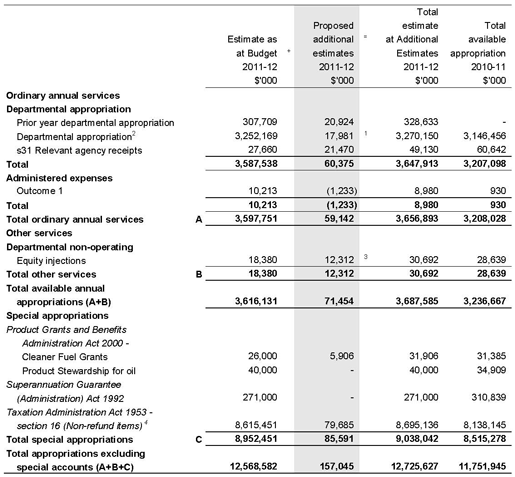
Table 1.1: Australian Taxation Office resource statement — additional estimates for
2011-12 as at Additional Estimates February 2012 (continued)
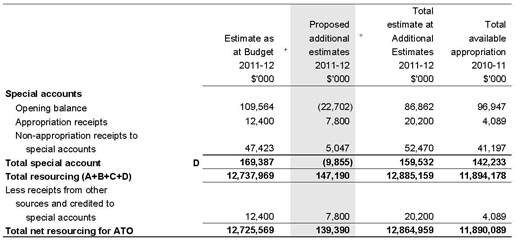
1. Appropriation Bill (No. 3) 2011-12.
2. Includes $137.8 million in 2011-12 for the departmental capital budget (also refer to Table 3.2.5).
3. Appropriation Bill (No. 4) 2011-12.
4. These figures relate to administered expenses including fuel tax credits, superannuation co-contributions, education tax refunds and research and development subsidies. Tax refund items for 2010-11 are $79.1 billion including $74 million paid via the Australian Customs Service (ACS) on the ATO's behalf. Estimated tax refund items for 2011-12 are $88.8 billion (including $80 million paid via the ACS on the ATO's behalf.
1.3 Agency measures
Table 1.2 summarises new Government measures taken since the 2011-12 Budget. The table is split into expense and capital measures, with the affected program identified.
Table 1.2: Agency measures since Budget

Table 1.2: Agency measures since Budget (continued)
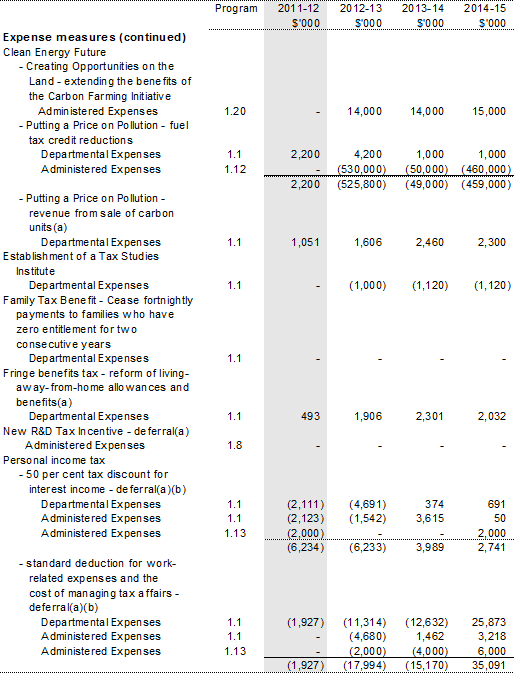
Table 1.2: Agency measures since Budget (continued)
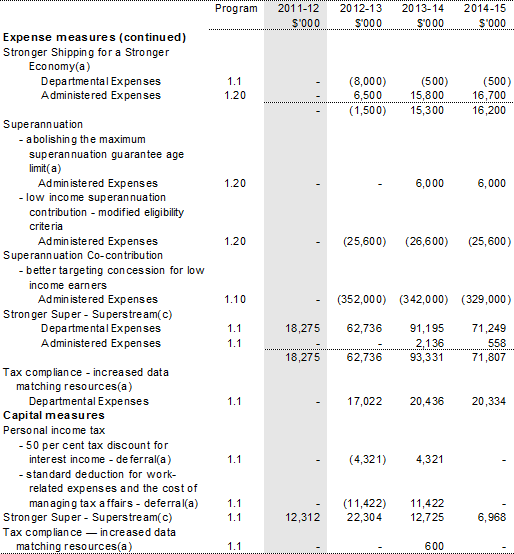
(a) These measures also relate to revenue measures.
(b) Figures updated since the Mid-Year Economic and Fiscal Outlook.
(c) Measures that impact on Appropriation Bills No. 3 and No. 4 that were agreed after the Mid-Year Economic and Fiscal Outlook.
Note. Details of these measures, with the exception of (c), are in the Mid-Year Economic and Fiscal Outlook 2011-12.
1.4 Additional estimates and variations
Table 1.3 details the additional estimates and variations resulting from new measures since the 2011-12 Budget in Appropriation Bills No.3 and No.4.
Table 1.3: Additional estimates and variations to outcomes from measures since the
2011-12 Budget
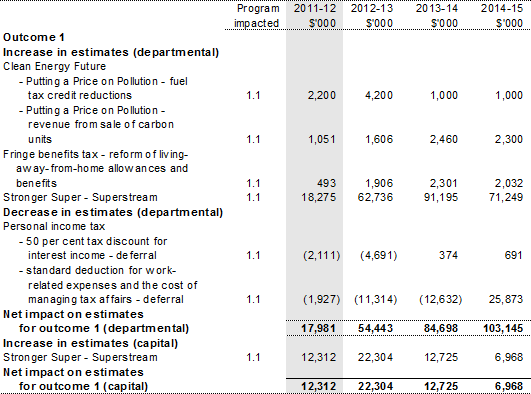
Table 1.4: Additional estimates and variations to outcomes from other variations
The ATO does not have any other variations since the 2011-12 Budget that affect additional estimates.
1.5 Breakdown of additional estimates by Appropriation Bill
Table 1.5 details the additional estimates sought for the ATO through Appropriation Bill No. 3. Table 1.6 details the additional estimates sought for the ATO through Appropriation Bill No. 4.
Table 1.5: Appropriation Bill (No. 3) 2011-12
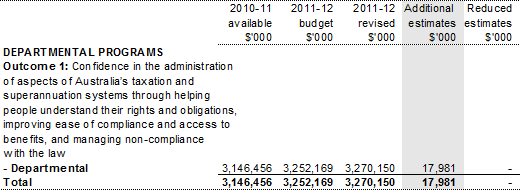
Table 1.6: Appropriation Bill (No. 4) 2011-12

Section 2: Revisions to agency outcomes and planned performance
2.1 Resources and performance information
There has been no change to the ATO's outcome or outcome strategy from that included in the Portfolio Budget Statements 2011-12 (pages 189-190).
There has been no change to the program objective, expenses, deliverables or key performance indicators for programs 1.2 to 1.20 that affect Appropriation Bills No. 3 and No. 4.
Table 2.1: Budgeted expenses and resources for Outcome 1
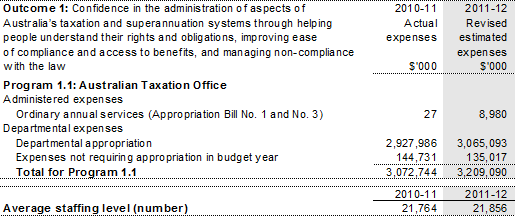
Program 1.1: Australian Taxation Office
There has been no change to the program objective, deliverables or key performance indicators included in the Portfolio Budget Statements 2011-12.
Table 2.2: Program expenses
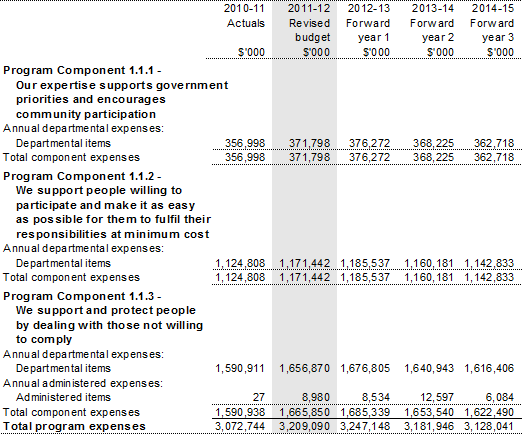
Section 3: Explanatory tables and budgeted financial statements
3.1 Explanatory tables
3.1.1 Estimates of special account flows
Special accounts provide a means to set aside and record amounts used for specific purposes. Table 3.1.1 shows the expected additions (receipts) and reductions (payments) for each account used by the ATO.
Table 3.1.1: Estimates of special account flows
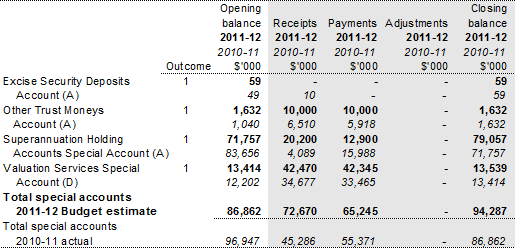
(A) Administered.
(D) Departmental.
3.2 Budgeted financial statements
3.2.1 Analysis of budgeted financial statements
Budgeted departmental comprehensive income statement
The ATO is planning a balanced budget in 2011-12 after income tax equivalents expense from the Australian Valuation Office. This excludes the impact
of appropriation funding for depreciation and amortisation expenses from 2010-11 onward under the Operation Sunlight changes to agency funding.
The budgeted departmental comprehensive income statement also reflects changes arising from Budget measures as outlined in Table 2.1
Budgeted departmental balance sheet
The ATO's assets are predominantly non-financial assets. In 2011-12, the ATO is pursuing a significant capital works program to focus on:
- developing or improving internally generated systems and software to support the ATO's intention to make people's experience with the revenue systems easier, cheaper and more personalised, and to improve the integrity and flexibility of the superannuation business systems; and
- building and fitting out several new offices.
The ATO's liabilities continue to be predominantly employee entitlements.
3.2.2 Budgeted financial statements
Departmental financial statements
Table 3.2.1: Budgeted departmental comprehensive income statement
(for the period ended 30 June)
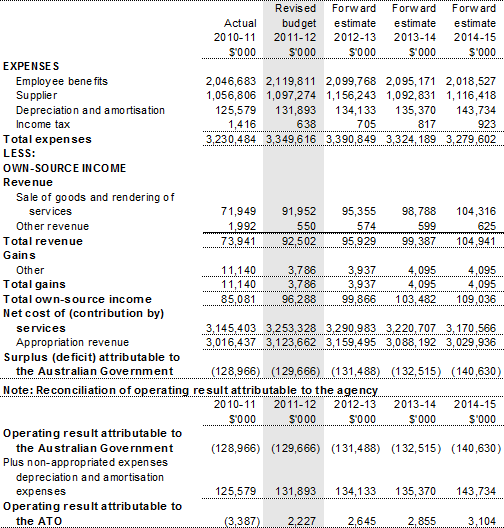
Prepared on Australian Accounting Standards basis.
Table 3.2.2: Budgeted departmental balance sheet
(as at 30 June)
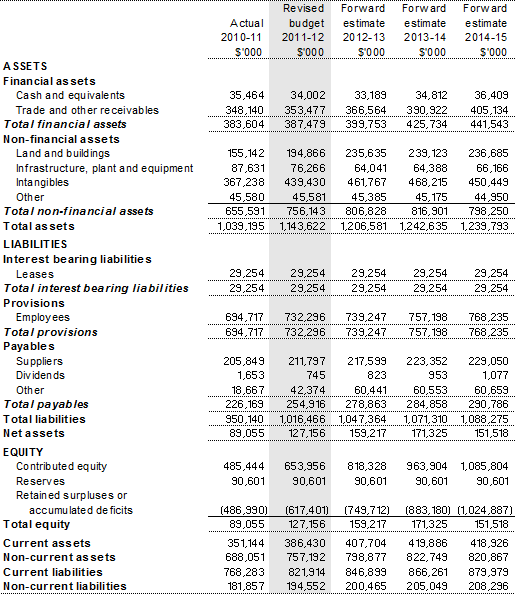
Prepared on Australian Accounting Standards basis.
Table 3.2.3: Budgeted departmental statement of cash flows
(for the period ended 30 June)
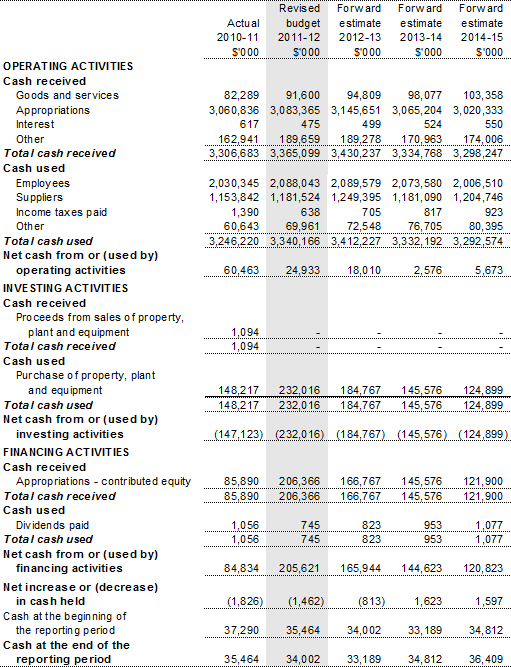
Prepared on Australian Accounting Standards basis.
Table 3.2.4: Departmental statement of changes in equity — summary of movement
(budget year 2011-12)
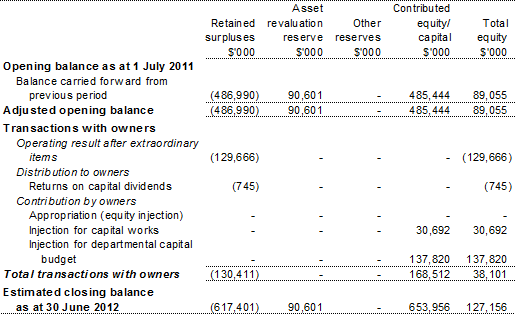
Prepared on Australian Accounting Standards basis.
Table 3.2.5: Departmental capital budget statement
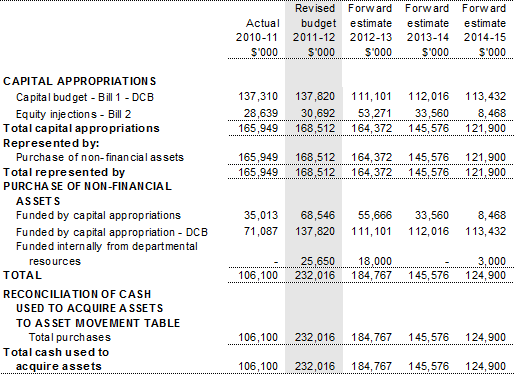
Prepared on Australian Accounting Standards basis.
Table 3.2.6: Statement of asset movements — Departmental
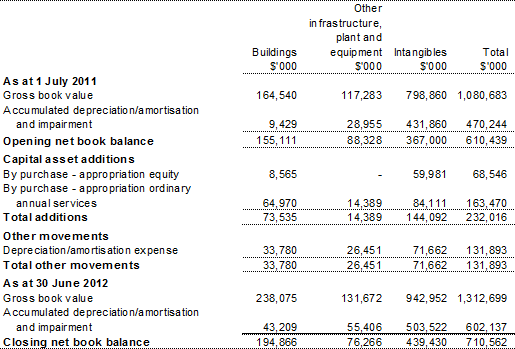
Prepared on Australian Accounting Standards basis.
Schedule of administered activity
Table 3.2.7: Schedule of budgeted income and expenses administered on behalf of
government (for the period ended 30 June)
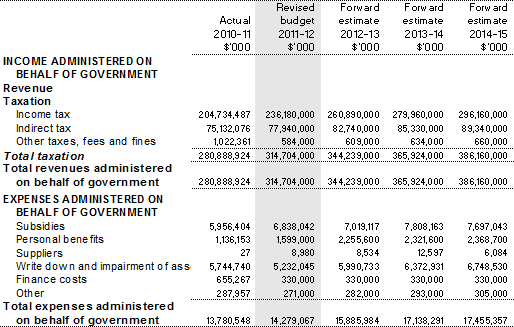
Prepared on Australian Accounting Standards basis.
Table 3.2.8: Schedule of budgeted assets and liabilities administered on behalf of
government (as at 30 June)
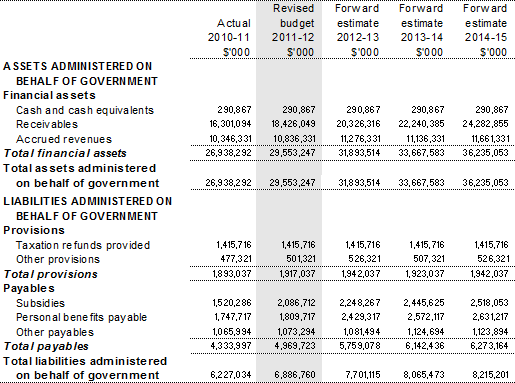
Prepared on Australian Accounting Standards basis.
Table 3.2.9: Schedule of budgeted administered cash flows
(for the period ended 30 June)
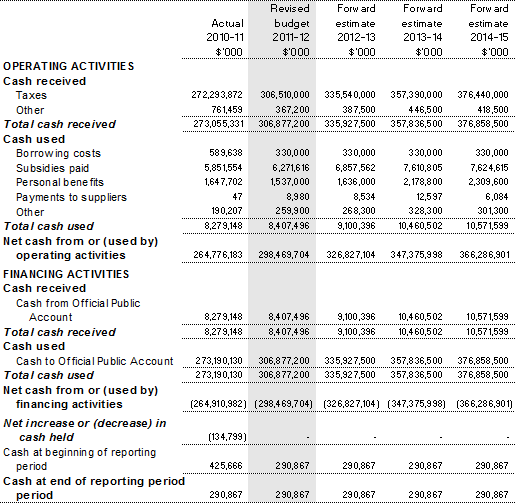
Prepared on Australian Accounting Standards basis.
Table 3.2.10: Schedule of administered capital budget
The ATO does not have any administered capital.
Table 3.2.11: Schedule of asset movements — Administered
The ATO does not have any administered non-financial assets.
Notes to the financial statements
Basis of accounting
The budgeted financial statements have been prepared on an accrual basis.
Departmental
The departmental financial statements, included in Tables 3.2.1 to 3.2.6 have been prepared on the basis of Australian Accounting Standards and Department of Finance and Deregulation guidance for the preparation of financial statements.
Cost of administering the goods and services tax
Departmental statements include the estimated costs of administering the goods and services tax (GST) under the 'intergovernmental agreement on the reform of Commonwealth-State Financial Relations'. The GST revenue is collected on behalf of the States and Territories which agree to compensate the Australian Government for the agreed GST administration costs. The recovered GST administration costs are reported under the Treasury Portfolio.
Administered
The administered financial statements at Tables 3.2.7 to 3.2.9 have been prepared on the basis of Australian Accounting Standards and Department of Finance and Deregulation guidance for the preparation of financial statements.
The standards require that taxation revenues are recognised on an accrual basis when the following conditions apply:
- the taxpayer or the taxpayer group can be identified in a reliable manner;
- the amount of tax or other statutory charge is payable by the taxpayer or taxpayer group under legislative provisions; and
- the amount of the tax or statutory charge payable by the taxpayer or taxpayer group can be reliably measured, and it is probable that the amount will be collected.
The amount of taxation revenue recognised takes account of legislative steps, discretion to be exercised and any refunds and/or credit amendments to which the taxpayers may become entitled.
Recognition of taxation revenue
Taxation revenue is recognised when the Government, through the application of legislation by the ATO and other relevant activities, gains control over the future economic benefits that flow from taxes and other statutory charges. This methodology, known as the Economic Transaction Method (ETM), relies on the estimation of the probable future flows of taxes from transactions that have occurred in the economy, but have not yet been reported, and are likely to be reported to the ATO through an assessment or disclosure.
In circumstances when there is an 'inability to measure tax revenues reliably when the underlying transactions or events occur', the accounting standards permit an alternative approach known as the Taxation Liability Method (TLM). Under this method, taxation revenue is recognised at the earlier of when a tax liability has been assessed, or, the ATO receives payment. This recognition policy means that taxation revenue is generally measured at a later time than it would have been had it been measured under the ETM method.
In accordance with the above revenue recognition approach, the ATO uses ETM as the basis for revenue recognition, except for income tax for individuals, companies and superannuation funds, and superannuation surcharge. Revenue from these sources is recognised on a TLM basis.
Items recognised as reductions to taxation revenue
The following items are recognised as reductions (increases) to taxation revenue and not as an expense:
- refunds of revenue; a
nd - increase (decrease) in movement of provision for credit amendments.